The last piece was supposed to be this piece, but I had to unleash a long pent-up rant at the traffic antifas demanding that you subsidize their pet projects, while they apply capitalist hyperscrutiny to any possible subsidy that net taxpaying White People in small towns and suburbs might be getting. Today we’re taking a more measured and methodical approach to the claim that the suburbs, and indeed small towns, are somehow subsidied. After all, I don’t want to put words in these people’s mouths, so let’s see their overwhelming evidence for small towns and suburbs being Ponzi Schemes!
To refresh your memory, in the piece just before the rant we were introduced to the “Suburban Growth Ponzi Scheme” theory, created by Charles Marohn of Strong Towns over a decade ago, and endlessly hyped by the Traffic antifas. There was a lot of conjecture and hot air, no sources, and no numbers. But Marohn fixes all that in this episode. Prepare yourself, suburbanite, because Strong Cucks absolutely DEMOLISHES the argument in favour of building on the cheap land at the edges of cities the way it’s always been done for thousands of years. And quaint, small towns? Forget about it. Ponzis, all of them.
Strong Towns – The Growth Ponzi Scheme Part 2:
In yesterday’s article we pointed out how cities routinely trade the near-term cash advantages of new growth for the long-term financial obligations associated with the maintenance of infrastructure. Cities pay little for new growth, but receive enhanced revenue from the development. In return, the city assumes the obligation — and the long-term financial liability — to maintain the now-public infrastructure.
Understanding this, we began to collect hard numbers from actual projects and compare those costs to the revenue generated by the underlying development pattern. This work continues, but in every instance we have studied so far, there is a tremendous gap in the long-term finances once the full life-cycle cost of the public obligations are factored in. Without a dramatic shift of household and business resources from things like food, energy, transportation, health care, education, etc… and into infrastructure maintenance, we do not have even a fraction of the money necessary to maintain our basic infrastructure systems.

If we have one dollar we have a fraction of the funds needed. Vague language like this is unfortunate in such a rigorous intellectual endeavour as Strong Towns. But I can ignore that for now. After all, we’re finally getting real world examples of the Suburban Ponzi Scheme. I’m sure they’ll be really damning!
The following is a smattering of examples. We link to a further explanation of the underlying numbers for those with a deeper interest in our methodology.
Let’s take a look at these case studies. I’m sure they’ll absolutely HUMILIATE the suburbanite CaRBrAinS.

This one will have to wait until next week. Jaime, can you pull up the date of this article please?

Strong Towns has been one week away from debunking the suburbs for the past twelve years.
The rest of the case studies are barely better. Above we see one on “street serving high value homes.” Feel free to send Chucky an email about this one. I’m sure he’ll get right back to you with their case study that needs to be kept secret for no apparent reason.

And here we see the “small town wastewater system” case study, which is just this paragraph. No, it does not link to anything else. Apparently the facts contained in just this paragraph simply speak for themselves.
SMALL TOWN WASTEWATER SYSTEM
A small town received support to build a sewer system from the federal government back in the 1960’s as part of a community investment program. Additional support was given in the 1980’s to rehabilitate the system. Today, the system needs complete replacement at a cost of $3.3 million. This is roughly $27,000 per family, which is also the median household income. Without massive public subsidy, this city cannot maintain their basic infrastructure. It is, essentially, a ward of the state.
That’s it. That’s the whole thing. One single unnamed small town spent too much creating a wastewater system. Therefore they needed to be bailed out by the state government. Therefore, all small towns are Ponzi Schemes.
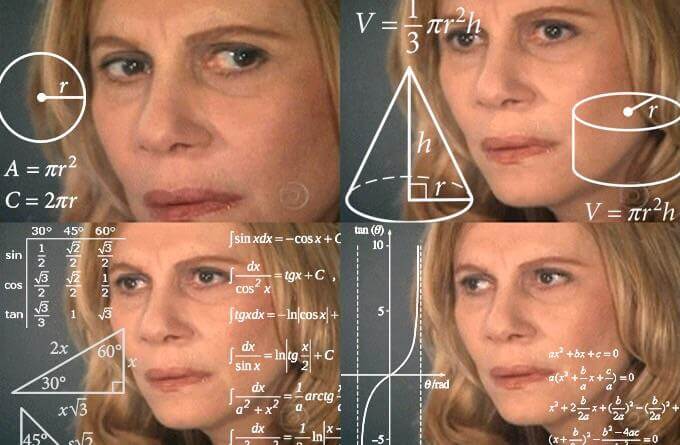
At least, I think that’s what Chucky Marohn is trying to say. It’s hard to know, because he doesn’t bother to explain the significance of this anywhere on the page. Instead, he just throws that out there and assumes the reader gets it.
I’ll remind you that cities also receive enormous subsidies. I have yet to see an unsubsidized municipal subway or transit system. They are also “wards of the state.”
In 2015, New York State and NYC gave the MTA subsidies of $4.1b and $1.4b, respectively. By dividing the subsidies by the number of taxpayers in NYS and NYC, each state taxpayer paid a $459 subsidy and each city taxpayer paid a subsidy of $825 (includes state subsidy).
Getting subsidized by the Government and being a “ward of the state” does not mean that something is a Ponzi Scheme, whether the entity being subsidized is a city, small town, or anything else. It is a bizarre non-sequitur to bring up subsidies as proof of the fundamentally Ponzi nature of suburbs, or in this case, towns.
Also remember, these are the best examples they’ve come up with to prove that small towns are Ponzi Schemes. One town in Minnesota having a wastewater treatment facility built for them that they couldn’t maintain isn’t a Ponzi Scheme at all. It’s just not being able to maintain infrastructure that you never collected property tax revenues off of, because it was always owned by the city in the first place.
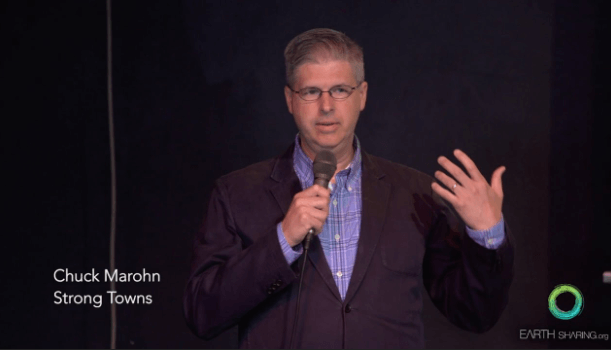
Marohn doesn’t bother linking to the case study, but it must be out there somewhere, because NotJustKikes obliquely references this in the below video that I quoted extensively in the previous rant. As a result, we know the town is Backus, Minnesota. The town has an average household income of just $27k. In other words, poor people got money from the Government, and that’s a good thing.
If this was Marin County, California, you could have the same population density and “car centric infrastructure,” and they’d be able to pay for it no problem, because they’re richer. But I guess because those people aren’t rich, they shouldn’t be subsidized by richer people, and should just learn to enjoy being poor. Boy, the traffic antifas sure do love their tactical capitalism when it harms White People.
Strong Towns Rural Road Case Study:
Most development that takes place in small towns ultimately weakens the town. This is because most development costs the community more money to maintain than is ever brought in through additional tax revenue generated by the development. This is true even when the development is successful and builds-out right away. It is almost always a losing proposition.
We’ve moved on to the very first case study, and already found that Chuck Marohn doesn’t understand the phrase “balancing the budget.” Luckily, cities only need some things to be net taxpaying. Other things can be net tax consuming. I know this is obvious, I’m sorry that I have to waste your time explaining this, but Mr. Marohn doesn’t appear to understand.

That some parts of a city lose the government money is one of those pretend insights that the Urbanites are famous for. It’s highly likely that most development in a small town, or in a big city for that matter, does not pay for itself. There is absolutely nothing wrong with this.
Does Charles Marohn think that the purpose of development in a town is to always have a positive return on investment for the municipal Government? If that were the case, then the town would just be constantly making profits and never spending any of it. Does this seem like a reasonable course of action to anyone else? Or do we perhaps want money losing services like (non-ADL controlled) policing, and firefighters? Or even subsidies to less well off people so they don’t have to drive down gravel roads every day?
Most small towns in Minnesota are funded primarily through property taxes. My own property tax statement arrived this week indicating that my family’s share of the city’s revenues will be $252 this year. That has been a pretty consistent number for some time now, and it provides an opportunity to provide readers of TPB.com a concrete example of the Small Town Ponzi Scheme.
Another link, this time to a “The Planner” piece on the “Small Town Ponzi Scheme”. I’m excited! I can’t wait to –

Get cockblocked once again. It’s a real shame that this is all put together so poorly, because this series by Strong Towns is crucially important intellectual material. How else can we understand the counterintuitive truth that everything except for Bill’s Standard Fuck Party is unsustainable Ponzi Scheme driven development.
We purchased our property in 1996 and built a house that same year. We have your standard, “new” small-town lot – 5 acres on a cul-de-sac. We bought it because of the location, the thick woods and, most of all, because it was the lowest price lot we looked at.
At the time we purchased the lot, the road in front of it was gravel (Class 5 for you rural folk, aggregate for you engineers). The year after we built, the city improved the road to an asphalt surface (tar or bituminous, respectively). The city graciously picked up half the cost of this road and assessed the rest back to us. This was a good deal and we gladly paid the $3,300 assessment (financing provided by the city to boot).
So you got subsidized. That seems like a nice thing for the city to do. It also seems like the opposite of a Ponzi Scheme. I don’t remember Bernie Madoff paying his investors, do you?
So our share of the road was initially subsidized $3,300. Let’s assume my taxes have not increased since 1997 (they have, but it helps makes the point).

Let’s also assume that the city has spent the same amount – roughly 35% of the budget – on road improvements each year (that is also not true – it has been increasing, but it also makes the point).

Based on these assumptions, it will take the city more than 37 years just to repay the initial subsidy.
$252/year tax contribution x 35% portion dedicated to roads = $88/year contribution to roads
$3,300 initial road subsidy / $88/year contribution = 37.4 years
Now consider the obvious fact that by the time the city “breaks even” on this “investment”, the road will have been maintained for 37 years, including at least one major maintenance project (resurfacing). Not so obvious is that Minnesota law would prevent the city from legally assessing for the cost of the maintenance since I would see no increase in property value (they may assess anyway – many cities do, despite the fact that it is not technically legal). You can also add to the analysis the fact that I skewed the numbers to shorten the repayment. My taxes have increased since 1997 and the percentage of the city budget that went to roads was less, so my contribution is actually even lower than this scenario represents.
The time to “break even” is essentially never – my road will always cost my neighbors more to maintain for me than I will ever contribute to the effort.
It’s almost like it was… a subsidy.

Charles Marohn goes to great lengths to document that yes, when the city offered to subsidize half the costs for paving a road that lead to his house, he was in fact subsidized by this. I’ll give you all a minute to collect yourselves. Yes, the subsidy was in fact a subsidy. The town spent money that they aren’t going to get back to do a nice thing for a citizen.
Some people would call this “Good Government.” Others would call this a Ponzi Scheme. Some people are geniuses, others have extra chromosomes. It takes all kinds to build a world.
So my neighbors are going to pay nearly three-fourths of the cost of maintaining my road for me. I’ll make sure and wave to my neighbors. Perhaps host a block party or something.
Readers should know that the numbers for sewer, water, storm sewer and other major infrastructure is even more skewed.
I can now hear readers asking me how, if the numbers are this absurd, do small towns stay in business? The hard reality is that they are not. Small towns survive and cash flow using four different mechanisms:
- Subsidy from federal, state and regional governments.
- Taking on debt.
- The Small Town Ponzi Scheme (taking revenue from new development to fix old development).
- Transfers from net-positive tax-paying properties to subsidized properties.
We’ll talk about these four mechanisms some other time, but I’ll conclude by pointing out that only one of these is a stable, long-term strategy (hint: not the first three listed).
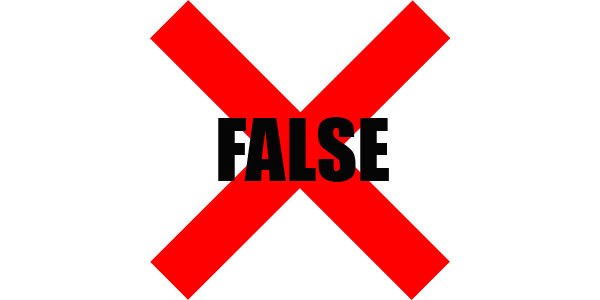
Actually two of those strategies are totally sustainable, but I’ll let Charles Marohn finish his riveting piece with these truly stunning final words.
Will federal, state and regional subsidies continue? Can small towns continue to take on debt? How much longer until ponzi schemes start failing?
Yeah, that’s a good question, Chuck. How long until we see literally any proof of your theory? It’s been a solid dozen years. How many more dozens before this particular Ponzi Scheme collapses.

Chuck Marohn has successfully predicted 200,000 of the past 2 municipal bankruptcies.
The time to start building Strong Towns is now.
First of all, Charles Marohn admits that cities can in fact use higher value property owners to subsidize lower value property owners. They can also use whatever money they raise from whomever to pay for non-transportation services like policing, firefighting, garbage collection, you name it.
In this very piece of his he showed that the city subsidizing the pavement of a gravel backwater road was in fact subsidized. He then simply assumes that the money that paid for this did not come from the other property tax payers in the municipality, but rather from the Federal or State Governments. Did he say that because he took a peek at the books? Poured over state and federal budgets? Got down to the bottom of this trivially answerable question of where the funds came from?
Spoiler: He never even makes the slightest attempt to fact-check his own hypothesis. And just to hammer home how idiotic his analysis is, below we see another building that is an “unsustainable” drain on our taxpayer finances.

A school? You’re building a school? Do you know how much of a drain on the taxpayer finances that’s going to be? It’s almost like you’ll need to pay for that by taking money from people who are net tax payers just so that these entitled children can learn how to read. Ridiculous! The children should pay their fair share! I’m a tactical capitalist now even though I’m also a traffic troon who wants ultra subsidized high speed rail for Canada and I AM OUTRAGED!

And now you’re adding in free bus rides? Don’t you know that that’s unsustainable? We arbitrarily decided that anything that is subsidized is unsustainable now, because reasons. You might think that public schooling being subsidized for its entire centuries old existence would show that things that are subsidized can be perfectly sustainable. But that’s not true because of reasons that you’re too dumb to understand. I’m not going to insult the superior intellect of the Reddit-Americans who know better by explaining why that’s laughable.

Even if the funds came from state and federal government, so what? Marohn just throws that out there, like the state and federal funds came into existence from nowhere. Chuck Marohn claims to be a former engineer, although I don’t think he was a civil engineer. Whatever the case, he undoubtedly paid a lot in income taxes, much more than the one time ~$3,500 subsidy that he’s getting from the city. So even if state funds paid for that, it was simply him paying for his own road. And again, he doesn’t even pretend to do any of the work tracking down where the money came from, because he’s a lazy dolt.
Need I remind you that this example is central to his premise that suburbs, and now apparently small towns, are Ponzi Schemes? This was one of eight examples that he used, and all we saw was a city subsidize a road to an already existing development at their own financial expense.

I really can’t stress enough how thoroughly this disproves his own theory. His claim is that suburbs and small towns have new development paid for them by the feds. They then get property tax revenue immediately, but have to pay for the infrastructure maintenance in the long term. This causes them to be desperate for new development to get those short term profits back.
To prove this, his own example shows a city paying out of their own pockets to improve already existing infrastructure. They can’t possibly have made money off of this, and his article goes to great length to detail how much they lost by doing this. And to be clear, he had already purchased the property. He was already living there. He was already paying property taxes. The city got nothing out of this, other than providing for one of their citizens, and he’s misinterpreted this to mean that small towns are Ponzi Schemes.

Yes, it really is that dumb. These people are lazy morons. Strong Towns is no better than the rest of the Urbanite Crowd, and we saw that with their absurd Toronto parking lot piece. I know the instinct is to think that there must be some there there, but trust me, there really isn’t.
Strong Towns Historic Harbor Renaissance Case Study:
We received an email asking us our opinion on a project taking place in Northeastern Minnesota in the city of Tower. The project, which is described in detail on the city’s website, would dredge a river channel to create a new harbor and then build a new town around that harbor near the existing city. In the words of the local State Senator, this would be Minnesota’s version of San Antonio’s River Walk. The cost is somewhere around $9 million.
Another link. Let’s see where this one takes us.
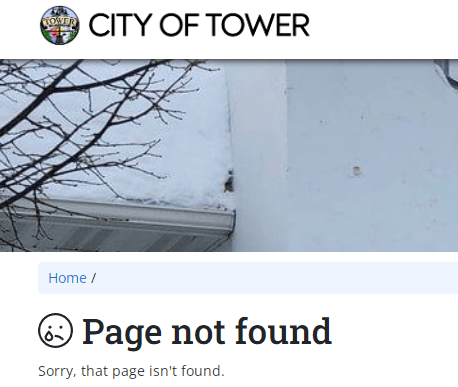
I predicted thith! And for the record, I’d recommend skimming this example, since it has absolutely no relevance to anything.
This is a small town and an even smaller circle of people involved in the machinations of the project, so I’ve not included the name of the individual that sent the email or some of the other background information. In discussing the project, the emailer offered the following thoughts:
It is rare anyone asks about whether the initial purpose of a project is questionable, but lately I and some of my associates have started rolling our eyes. Rural airports with five hangars expanding by a thousand feet to “serve possible business expansion”, or atv trails with beneficial economic impacts listed as a supporting reason. Remember, these are always public money; the project on the above link is to be funded with state and federal money. They speak of a renaissance, but I envision a half open hotel with a coffee bar closed between September and Memorial day employing a few East European summer visa workers slinging coffee to the occasional wandering boater. This after dredging a river and harbor , building jetties into the lake and disturbing wetlands.. millions in public cash. The distances on Vermillion are great, and even many locals sarcastically describe visitors traveling the length of Vermillion rather than hitting a closer resort.
All of this to save a city dying because it no longer has a reason to exist.
Let’s just start by looking at this investment in terms of the existing size of Tower.
Project Cost: $9 million
2008 Population of Tower: 498 (295 housing units)
The real tragedy is how the beautifully-designed town of Tower has been left to decay while the politicians and professionals focus everyone on the next big idea. If you truly want to be outraged, check back with us next week for that analysis.
Our emailer astutely summed up what is going on.
Before I read your site, I would end up analyzing a small town like Tower with a population viability analysis. Why did it initially exist? What was the resource that drew the population? Was that a long term sustainable proposition? Why did it then fail? A place like Tower, the answers were fairly simple; it formed before the Mesabi Range when the railroad did not wish to cross the extensive swamps south of the Giants Range and either timber, gold or iron was speculated there. It was then sustained by the artificial construction/mining boom that lasted over two decades until 1980. Of course since then, like all of Northeastern Minnesota, it has declined despite massive public spending.
Multi-million dollar gimmicks cannot save Tower. America can prosper when we focus cities like Tower on Strong Towns solutions that make better use of their current investments instead of focusing their energies (and our money borrowed from China) on the big gamble just outside of town. Doing that would be a true renaissance.
With this case study he “proves” that small towns are Ponzi Schemes, because this one small town in Minnesota that has seen better times finally got some of their citizens taxdollars to work for them when the feds promised to give them a $9 million grant to build a new harbour. First of all, it was actually $7 million. More importantly, he just “proved” that there are feds-state-city partnerships for infrastructure projects. Congratulations? If you scroll up you may have noticed that New York state taxpayers fund the NYC subway and transit system to the tune of billions per year, and yet NYC is not a Ponzi Scheme.

He starts off talking about Ponzi Schemes. Then he says that occasionally small towns get federal subsidies for one time projects, just like big cities get federal and state subsidies constantly. It’s like he’s playing a game of telephone where one infrastructure project subsidized == unsustainable == Ponzi Scheme.
You might be wondering what this one town getting a new harbour infrastructure project has to do with the price of tea in China, but Marohn has this to say about this particular case study in the main piece.
The last case is probably the clearest example of the perverse incentives of the American pattern of growth-based development. The city gets $9 million of federal money to induce new growth. It costs them relatively little. If the growth happens, they get the tax revenue. If it does not happen, they are out relatively little. This all works fine until the end of one life cycle, when large-scale maintenance or replacement is needed. At that point, the costs vastly exceed the ability of the city to pay.
Oh my gawdddddddddddddddddd!

At that point they’ll have to, like, get another subsidy of $7 million to do the whole thing over again.
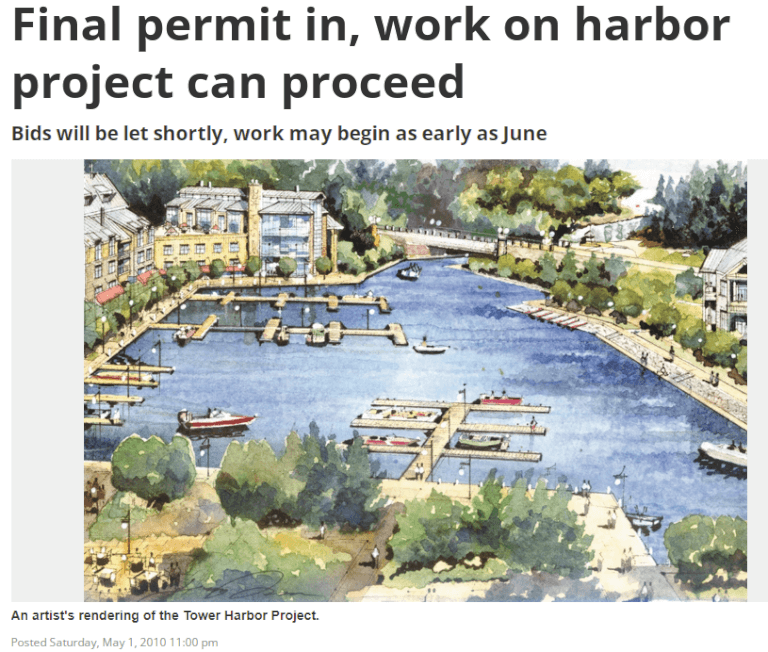
Just to be clear, the project is a new harbour. I have no idea what the ongoing maintenance costs of this are. Probably very low, and Marohn once again – I’m detecting a theme here – doesn’t even attempt to predict what these costs are. He also doesn’t quantify what the increased property tax revenues will be, probably because it’s a FUCKING HARBOUR AND NO ONE OWNS IT.

This was it, the example that holocausted the idea that towns aren’t Ponzi Schemes. One town in Minnesota got a small subsidy from the Federal Government to build a new harbour, which the town made zero money off of, due to them not being able to farm property tax revenues out of the lake. And there were no projects that spun up from this point, it’s a one-off.
The entire point of Ponzi Schemes is not that you get one customer, one time. The point is that you have a few initial customers, then you have a multiple of that in the second wave, then a multiple of that in the third wave, and so on. Here’s a three minute long remedial video on it that Chucky Marohn should consider watching.
Here’s a one minute long sketch from the office.
And here’s a real life example from Ponzi himself.
And here’s another involving Bernie Madoff.
If you’re curious what the difference between a Pyramid Scheme and Ponzi Scheme is, it’s mostly semantics, but technically a Pyramid Scheme involves the victims recruiting more victims, while a Ponzi Scheme involves an increasing number of investors, but this is coordinated by the fraudsters from the top.
I don’t think I’m incorrect for hammering into you time and time again that Ponzi Schemes require exponential growth. At the very least, they require constant growth, before collapsing. Let’s take a look at the population figures for Tower, Minnesota.
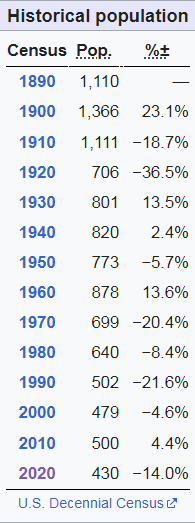
The population numbers are going down. But apparently a town with negative population growth is secretly a Ponzi Scheme because they get a one time subsidy of a few million to build a new harbour.

And this is the very best example that proves that small towns are Ponzi Schemes. A town with negative growth getting a one off subsidized project, that doesn’t even bring them property tax revenue unless they figure out a way to tax the catfish for their riverbed dens.

Do you see what I mean when I say that there’s barely enough here to criticize? Strong Towns, and Chuck Marohn, just say things that don’t even come remotely close to proving what they claim it does. These two examples quite clearly proved the opposite, especially the rural road example. But after debunking himself, Chucky Marohn claps his hands together with satisfaction, and the army of uncensored Traffic Troons mindlessly regurgitate this nonsense like it’s some sort of actual intellectualism when it is the furthest thing from that.

I’ll be blitzing through the rest of his series on the Ponzi Schemes. I think I’ve shown more than enough.











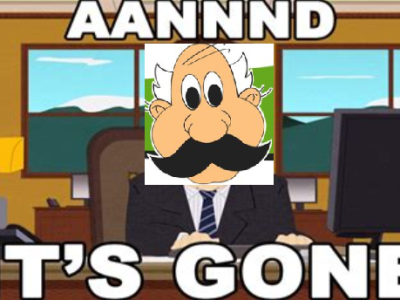
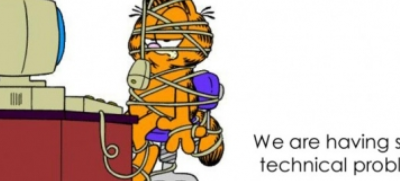

You know whats shocking is that the planner blog wasn’t even archived I thought you were just doing a bit but I can’t find it anywhere on the internet.
I checked out the Strong Town web site. It’s insufferable.
Mr. Mahron is wrong. The problem is not that municipalities are organized like ponzi schemes. Instead, cities are burdened by an ever-growing suite of costs, with simultaneously stagnant or shrinking tax bases.
For example, how about tackling outrageously big ticket budget items like policing. But as a “recovering engineer”, that would mean Mahron would have to address decades-worth of dystopian government policies. Mahron would likely be in way way over his head.
Dystopic policies include: subsidies to unproductive defectives such as “first nations” peoples; low IQ third world migrants; catch and release criminal justice system; weaponized homeless people, drug users, mentally ill, degenerates, etc. In fact, there is an endless and ever-growing pool of unproductive “deserving” poor, who manage to both degrade cities while simultaneously burdening if not outright attacking productive residents/taxpayers.
Want to talk about a real ponzi scheme? Then how about public sector unions, and their generous defined benefit pensions? For example, a typical city pays for both an active duty police force, and a small army of retired and/or disabled cops. So taxpayers end up paying for two police forces. Ditto for the fire protection, teachers, and other city services.
Meanwhile, unions complain that their pensions are underfunded. See for example: https://www.hgexperts.com/expert-witness-articles/underfunded-police-pensions-strain-u-s-cities-45259
Yet to fund the pensions so as to keep retirees living in the style they’ve become accustomed would mean much higher taxes. Meanwhile, mutants and degenerates roam the streets and are actively destroying the tax base.
Nothing Mahron proposes would even come close to addressing these issues. Not even an infinite number of bike paths, street calming projects, or pretty parks can undo this chaos . He is just one more huckster, creating distractions, and hoping to milk the current crisis.
PS, I hope you can hang in there Rake. I like your work! But if not, do take care of yourself, and good luck with the other projects!
[…] PSA: Deboonking the Traffic Soyboys Part 27 – These aren’t the Ponzi Scheme Case Studies you… […]
Unless I’m misreading what goes saying, he’s got a public road that dead ends on his property, but he’s pretending that’s the average road. That’s not even remotely the average case, most rural properties have a road going on the border of a several parcels, and if they don’t live right by the road they have a private driveway that they pay to maintain. Even in rural areas, they’re usually servicing several industries that pay way more on taxes than 1 resident, like large farms or quarries. If his road does service more than 1 resident, he’s lying like crazy on his financial calculation. Also, paved roads are easier to plow in the winter, and you don’t have to add gravel and regrade them all the time, so the city might be saving on maintenance.
What’s funny is that if someone started talking about reducing the federal government, these faggots would be the first to say “who would pay for the ROADS?!?”
Spot on. Marohn could give us pictures, or anything really. As it is his examples are essentially “trust me bro” tier. It’s hard to even understand the examples, let alone what they are supposed to mean.